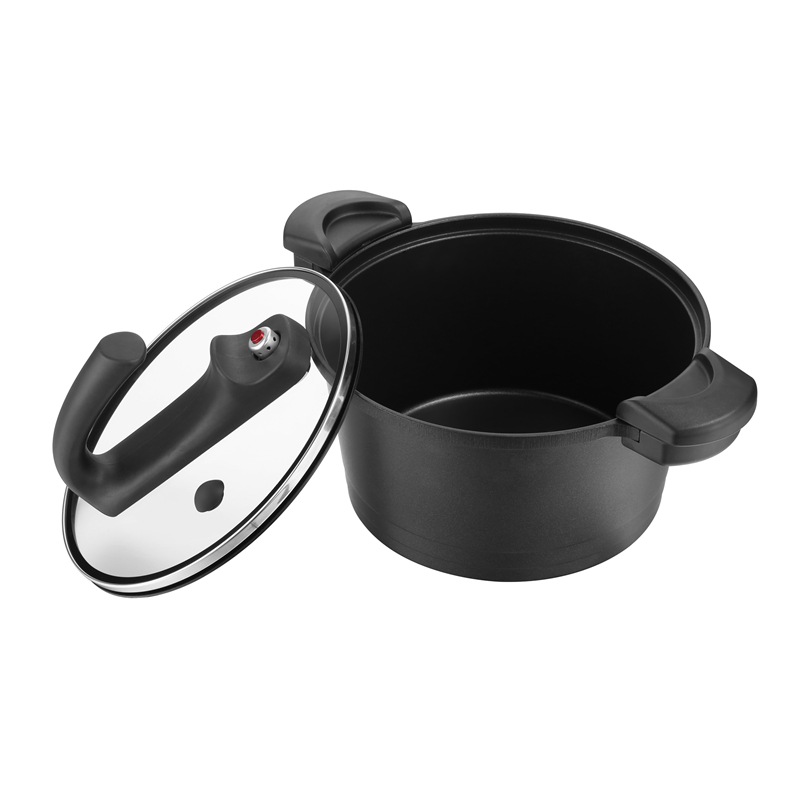Benefits of Nonstick Low Pressure Cooker
2024-07-09
A nonstick low-pressure cooker combines the benefits of nonstick cooking surfaces with the efficiency and safety features of a pressure cooker. Here’s an overview of what such a cooker typically entails:
Features
1. Nonstick Coating
- Interior Surface: Equipped with a nonstick coating (such as Teflon or ceramic) to prevent food from sticking during cooking.
- Ease of Cleaning: Facilitates easy cleaning and maintenance, reducing the need for extensive scrubbing.
2. Low-Pressure Cooking
- Pressure Settings: Operates at lower pressure levels compared to traditional pressure cookers, typically around 5-10 PSI (pounds per square inch).
- Safety: Designed with safety mechanisms to regulate pressure and prevent excessive build-up, ensuring safe operation.
3. Material and Construction
- Durable Build: Constructed from materials like stainless steel or aluminum for durability and heat conductivity.
- Lid Locking: Includes a secure locking lid to maintain pressure and safety during cooking.
Benefits
1. Efficiency
- Faster Cooking: Utilizes lower pressure levels to cook food more quickly than conventional stovetop or oven methods.
- Energy Savings: Reduces cooking times, thus saving energy and lowering utility costs.
2. Nonstick Properties
- Food Release: Prevents food from sticking to the cooking surface, making cleanup easier and reducing the need for excess oil or fats.
- Versatility: Ideal for cooking a wide range of dishes, from soups and stews to delicate foods like fish and vegetables.
3. Safety Features
- Pressure Regulation: Built-in safety valves and pressure release mechanisms prevent dangerous pressure build-up and ensure safe cooking.
- User-Friendly: Designed with user-friendly controls and indicators to monitor and adjust cooking settings.
Considerations
1. Maintenance
- Care Instructions: Follow manufacturer's guidelines for cleaning and maintenance to preserve the nonstick coating and cooking performance.
- Avoid Sharp Utensils: Use non-abrasive utensils to prevent scratching the nonstick surface.
2. Capacity and Size
- Cooking Needs: Choose a size suitable for your cooking needs, considering the number of servings and types of dishes you typically prepare.
3. Compatibility
- Stovetop Types: Ensure compatibility with your stovetop (electric, gas, induction) for proper heat distribution and cooking efficiency.
Conclusion
A nonstick low-pressure cooker combines the benefits of nonstick cooking surfaces with the efficiency and safety features of pressure cooking, making it a convenient kitchen appliance for preparing a variety of meals quickly and with minimal cleanup. Its design enhances cooking efficiency while maintaining safety and ease of use, appealing to individuals looking for efficient cooking solutions with easy maintenance.



